The Holga: There’s no on-board flash. No PC connector for an external flash. There’s no shutter speed selection. You get (approx) 1/100 of a second and deal with it. It offers only two F stops: f. 11 and f. 8 (“sunny” or “less sunny”) — you switch a little plastic lever back and forth to choose which one you want. There’s no tripod socket (you can rubber band it or drill one in if you want). The lens is plastic and fixed at medium wide 60mm. The film advance is iffy at best. (The typical solution? Jam a folded piece of cardboard from your film’s box under the spool to hold the film tight.) Here are the focus options:
![]()
Focus: 3 feet, 6 feet, 9 feet, or “infinity.”
So what’s the upside? It discourages fiddling around with camera-settings and encourages you to just shoot without thinking too much. The “problems” with the camera also create light leaks and vignetting that can create gorgeous, retro-looking shots.
Plus, it uses professional medium format film which yields dramatic results. David Burnett won top prize in a News Photographers’ award ceremony for this Holga shot of then presidential nominee Al Gore. Burnett said the Holga forces him to simplify, slow down, and “lets you concentrate on what’s really important in a picture.”
Backpacking with a Holga
I remember backpacking through Southeast Asia with a Holga back in 2002. I had another camera that I used for most of my shooting. But the Holga came out every once in a while.
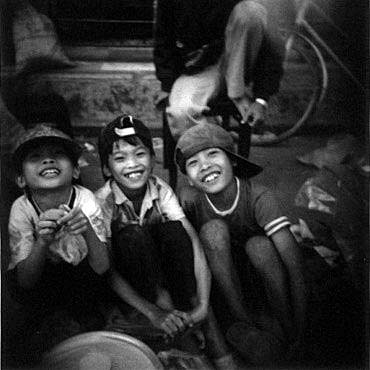
In fact, it started to take on extra meaning. It’s a genuine pain to load so you start to value every Holga shot. A scene would have to earn it’s way into Holgadom. When I came come across a great vista or interesting characters or cool shapes, I’d pull it out. Otherwise, it stayed in my backpack.
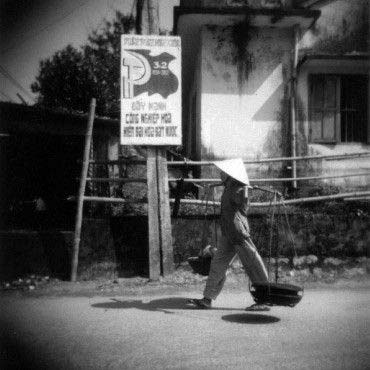
When I did use it, I tried hard to make every shot count. I’d carefully consider the composition. I’d take my time looking at different angles. I’d walk all around the scene. When I settled on a location, I’d shoot one or two shots and be on my way.
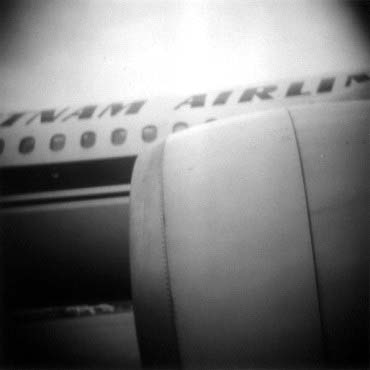
Also, focus and shutter speed and aperture melted away as considerations. What mattered was the thing I was shooting. It made photography elemental.
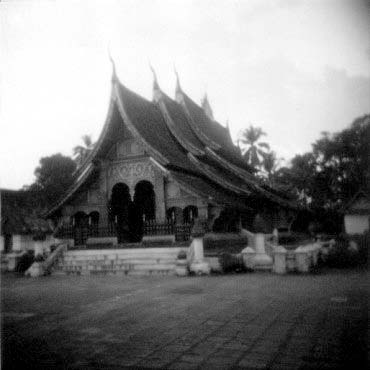
The Holga D
Digital cameras usually force you into the opposite mindset — endless options, unlimited shots, etc. So it’s neat to see Saikat Biswas, an Industrial Designer from India, come up with the concept for the The Holga D, a digital version of the Holga.
According to the site, the biggest feature of the Holga D is its lack of features. It offers the “absolute bare minimum feature set that you need for unobtrusive photography.” There isn’t even a display for viewing images as you shoot.
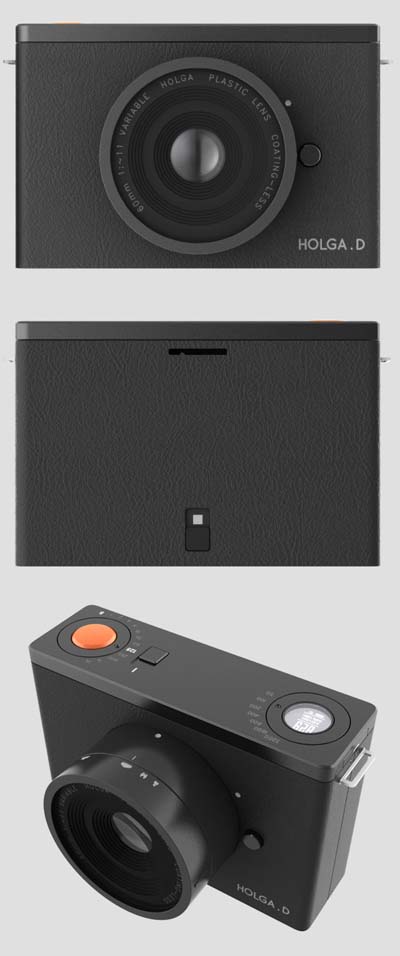
Think no one wants a feature malnourished camera like this? Think again. According to Biswas, the response has been overwhelming.
Within [the] next few hours mails started pouring in about Holga D. Within one day it was all over the net! It was on En-gadget, Wired and and many more web sites! Most surprisingly BBC contacted me to feature it on a program!!!
My mailbox got flooded with hundreds of mails. The daily traffic to my website shot up to from around 50 to more than 12000 in just 2 days!!
Although I was not planning make this concept public so early as I was still drafting out a plausible production plan I am really happy and overwhelmed to see it’s resonating with so many people out there! Although I knew a camera like Holga D has potential but I must admit that the response is way beyond what I expected…All your overwhelming response re-assures that there is a real demand for such camera.
Thousands of camera manufacturers are out there trying to outdo each other in the digital space. More megapixels, more features, fancier lenses, etc. They’re all scrambling to the same spot though.
Even if the Holga D is just an idea, it shows the opportunity you can find by going in the opposite direction — by doing less and focusing on the elements of what people want.
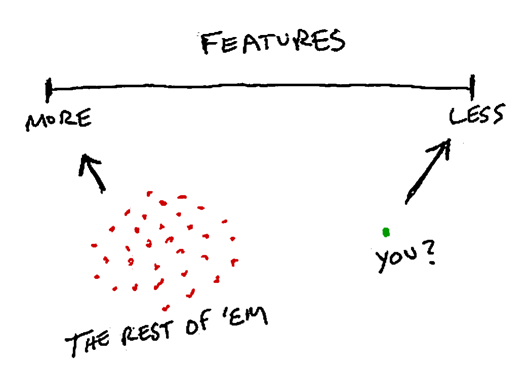
Related:
The Flip takes 13% of the camcorder market by doing less [SvN]
Nintendo thriving in third place [SvN]
Build Less [Getting Real]

Jane Quigley
on 02 Aug 10I’m a huge plastic camera fan – I have 5 of them, including 2 Holgas. I use them when I need to slow myself down – but not overthink.
It puts you in a quiet place of simplicity. And patience. It’s you and the camera, and you get gorgeous shots (back in a week or so….).
This post made my day – thanks Matt!
Chris
on 02 Aug 10A correction about Holga apertures: although there is a switch to go from sunny to cloudy, it doesn’t actually do anything. Look through the lens of a Holga when you toggle the switch and you’ll see that the aperture mask is larger than the shutter mechanism. It’s even simpler than you thought!
Scott
on 02 Aug 10Seems like cell phones already fill the niche for crappy featureless cameras.
Andrew
on 02 Aug 10Interesting in the light of the “how many devices do we carry debate.” Some prefer a single device that includes camera, phone, etc. You seem to prefer two cameras – neither of which can be used to read email!
Vesa M
on 02 Aug 10Actually instead of “encourages you to just shoot without thinking too much” it encourages you to think about what you shoot instead of the camera.
Tony
on 02 Aug 10I love this post. There are so many examples of this. Lack of complexity = easy to use = creativity.
A paintbrush lacks features – but you sure can be creative with it.
Tom G
on 02 Aug 10For about the same (or less) money, why not pick up a used Yashica MAT TLR on eBay? It is also a simple photographic tool that is far higher quality than a Holga.
If you really want the ethereal look, smear some vaseline on a filter…
It has the same focus and f-stop adjustments and really doesn’t have much in features beyond the Holga. OK, so you can hook up a flash or change the shutter speed – leave it at a hundred if that’s what you want.
IMHO the point isn’t to be simple to the point of being inferior, its doing the important and necessary things really well.
Hashmal
on 02 Aug 10I tried the Holga, but I don’t like it very much, I find it too limited (there’s also the way it is promoted, way to “bobo”, way to expensive). While the effects and randomness provided are fun, I like to have some control on the pictures I take.
I like simplicity, but I also like power. That’s why I like those old cameras, like the Canon AE-1. You can choose the exposure (or let the camera choose for you), the focus, the shutter. The basics of photography, not wrapped in any “user friendly” feature. You can hack and tweak to achieve your goal. You can’t do that with any modern camera unless you are ready to pay the professional price.
Stan Hansen
on 02 Aug 10One time my wife (teacher) gave 24 dollar store disposable cameras to her class of preschoolers and took them on a field trip to a botanic garden. Some of the photos that came out of it rival that of any professional photographer I have ever seen. The perspectives and compositions they achieved from their heights were amazing. It taught me that no matter much you learn a skill, looking at it from a different perspective opens up a new realm of knowledge.
pwb
on 02 Aug 10Better than the Lomo?
John Peterson
on 02 Aug 10I have a very simple mode on my camera that simplifies everything. It’s called automatic. Although 90% of the time that does work well, when it doesn’t I can switch to other modes like underwater, sunny, sports, etc… As a result I could take great indoor pics at the indoor aquarium last weekend. If I had a Helga D or just my camera phone those pics would have never come out.
JOhn
CyberGus
on 03 Aug 10Agree with Tom and John, besides if I great photographer can accomplish a great image with an Holga D, is because the photographer, not matter what tool.
I understand the lack of features to help the user or client to focus on the important stuff, but hey, being mature enough in photography gives you enough to shoot only with the basic features of any tool that fits your work.
Anyway, great post.
Charles Miller
on 03 Aug 10The whole thing is marketing genius.
“Hey, I’ve got a great idea. Let’s buy up a stack of really cheap plastic cameras and sell them to hipsters!”
”...what?”
“It’s perfect. You can get a perfectly good automatic point-and shoot now for what… a hundred bucks? Hell, most people have cameras that can take decent photos now. You know hipsters: the moment everybody has something, there must be something wrong with it. Something uncool. We can make a fortune convincing them that what they really want is a cheap piece of plastic that can’t take decent photos.”
“Isn’t taking photos the whole point of owning a camera?”
“No, this is art!”
“Art is a camera that doesn’t work properly?”
“Well, it’s accidental art. Every photo is distorted and has weird colours, and that’s ‘arty’. And every so often you’ll completely by accident take a photo where that effect matches the subject matter, and you can show it off to your friends as if that’s the effect you were going for all along! That’s why it’s perfect: it’s art without having to go to the effort of being artistic!”
“You’ve sold me. Order a few hundred thousand and I’ll book some shelf space in urban outfitters.”
Rick
on 03 Aug 10Hi, This is a great post on the merits of Holga’s! We are currently progressing with the construction of the HolgaDirect website and are hoping to get it live within the next month. Our aim is to provide a comprehensive resource and shop for Holga related photography and cameras. For now you can follow our progress on Twitter or Sign up on the website. (Details Below)
Rick Web: www.HolgaDirect.com Twitter: HolgaDirect (www.twitter.com/HolgaDirect)
Richard Polhill
on 03 Aug 10Interesting, but I simply do not get the point of setting out to take crap quality photos.
Get an old 1940s/1950s medium format camera and achieve the same level of simplicity but actually get seriously good quality photos.
I recommend either a folding Zeiss Ikon or, what I now use, a Rolleiflex. The former was bought for about £20 at a car boot fair and takes stunning photos fits in a pocket when folded, too. The latter was a bit more at £80 plus another £80 to get it serviced but will work for another 50 years easily and is of truly professional quality.
Fixed length lens, manual shutter and aperture, manual focus. Nothing else.
Eric Anderson
on 03 Aug 10@Charles Miller – You captured perfectly in words what I was thinking about this post. Thanks for the laugh.
janogarcia
on 03 Aug 10If image quality is a factor to consider, I’d go for a Sigma camera. Simple, focused and top IQ. No bells and whistles.
http://www.sigma-sd.com/
http://sigma-dp.com/
“Sigma cameras are the exception to the photographic rule:
Today’s technological advances in the photographic equipment category are centered on bells, whistles and a vast amount of features that deliver few benefits. Sigma designs their cameras with one objective in mind: the attainment of the best end result photograph possible.”
http://www.sigmaphoto.com/shop/cameras
phread
on 03 Aug 10Charles: Holgas are fun, and give you very interesting results. Plenty of people were using these again well before the hipsters (do real hipsters even step foot in an UO?) were told to buy them.
They are great in so many ways for sports in the backcountry. I’ve used them mountain biking and snowboarding, especially in the backcountry, for years. They are very very light weight so there’s not a big pack-weight penalty, don’t have batteries that will die on you on a cold night camping, and $15 to replace of you fall on it stowed in your hydro-pack and crush it. And talk about a low barrier for entry for shooting medium-format…
Brian Puccio
on 04 Aug 10I love my rangefinder. I load the film, meter off my hand and lock the exposure. If I don’t want to deal with focusing, I’ll use the focus scale to find the hyperfocal length and set it to that. I won’t touch a setting unless the light changes. Excellent for street photography.
Or if I want to get more involved, I’ll shoot wide open and focus, often times guessing with the focus scale. The viewfinder that RFs use keep you from getting tunnel vision.
This discussion is closed.